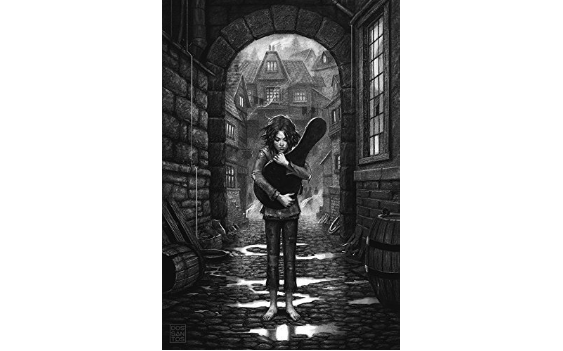By Benjamin Hong, Staff Writer
Three silences. A shell of an innkeeper. An astonishing life story. Patrick Rothfuss’s 2007 novel (otherwise known as The Kingkiller Chronicle: Day One) takes place in a fictional world called Temerant and follows the life story of a legendary musician, swordsman, and wizard named Kvothe (pronounced nearly identically to “quothe”). High fantasy elements and coming-of-age themes intertwine with intricate lore and poetic descriptions to create the immersive world of The Name of the Wind.
Rothfuss’s narrative opens at the Waystone Inn, an unremarkable establishment in the small farming town of Newarre. The owner of the inn, a man called Kote (who is revealed to be Kvothe, hiding in this nondescript corner of the world for an unclear reason), is sought out by a renowned historian known as the Chronicler, who persuades Kvothe to tell his life story for the first time ever. Kvothe proceeds to deliver a riveting account of his adolescent years, spanning the length of the book, chronicling his experiences growing up in his parents’ traveling troupe, living in abject poverty after being orphaned, and arriving, years younger than most students, at an illustrious University to study the arcane. Along the way, he makes both friends (good-natured Simmon, ethereal Denna, and stoic Wilem) and foes (storied Chandrian, privileged Ambrose, and Master Rhetorician Hemme) while building an impressive résumé of exploits that contribute to his mythical image in the present-day. Infrequently throughout the telling, the focus shifts back to the frame story, with Kvothe’s interactions with his otherworldly assistant Bast, the people of Newarre, and the Chronicler featuring prominently.
If you finish The Name of the Wind and want to continue exploring Kvothe’s world, there is a sequel out now, called A Wise Man’s Fear (alternatively The Kingkiller Chronicle: Day Two), chronicling the second day of Kvothe’s oration. The third (and final) book in the series, as well as a possible media interpretation, are in the works; however, there is currently no announced release date for either.
Rothfuss’s high fantasy novel is reminiscent of N. K. Jemisin’s Fifth Season in its scientific approach to the fanciful and Ursula K. Le Guin’s The Wizard of Earthsea in its approach to character. However, it is fundamentally most similar to J. R. R. Tolkien’s The Lord of the Rings. Whether it be in its impressively layered world-building or the strength of its prose, Rothfuss’s story carries an incredibly strong resemblance to Tolkien’s masterpiece. Yet it also holds its own as a masterpiece in its own right. As a reviewer from The London Times wrote, “the reader is reminded of Ursula LeGuin, George R.R. Martin, and J. R. R. Tolkien, but never feels that Rothfuss is imitating anyone.”The comfortable pacing and the immersive backstory of the story Rothfuss spins brings a level of quality rarely matched in literature. However, there is also something to be said for some of the more superficial elements, which serve to connect this high fantasy world to the tile hallways of River Hill High School. Eric Wall, a history teacher at River Hill, remarked that Rothfuss’s depiction of “the dynamics students have to balance when they’re in high school, with schoolwork but also dealing with teachers and other students,” as well as it being more broadly “in a similar line to Harry Potter, but with a few more adult themes,” made The Name of the Wind a great addition to any student’s reading list.

